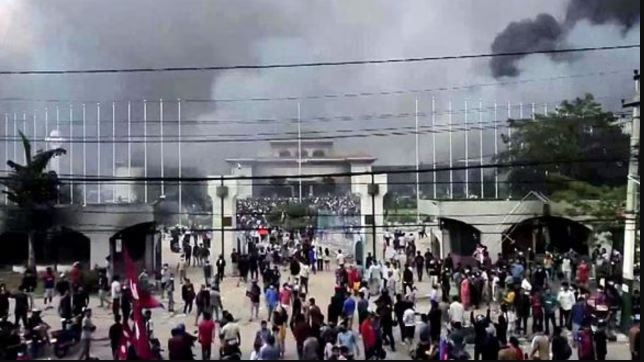In recent years, several Asian nations—Nepal, Indonesia, Bangladesh, and Sri Lanka—have witnessed youth-led unrest fueled by frustration over limited opportunities. While headline growth figures appear strong, the benefits have not translated into enough jobs for young people entering the workforce.
The World Bank warned in 2024 that South Asia risked “squandering its demographic dividend of growth.” The demographic dividend, often seen as an economic opportunity, arises when a country’s working-age population grows larger relative to dependents. But this potential is wasted if sufficient jobs are not created.
Political Turmoil and Corruption
Public anger has intensified across the region. In Nepal, young citizens criticized the political elite as the children of leaders flaunted lavish lifestyles online. Transparency International ranked Nepal 107th in 2024, while Bangladesh, Sri Lanka, and Indonesia also scored poorly.
Indonesia has been shaken by unrest after Parliament introduced a controversial housing allowance, nearly 10 times the minimum wage. The subsequent dismissal of respected finance minister Sri Mulyani Indrawati highlighted the challenges of governance and continuity.
The Job Creation Gap
According to the Asian Development Bank, South Asia’s growth has not been matched by sufficient job creation. Traditional entry-level industries such as textiles and auto manufacturing now employ far fewer people due to automation. From 2000 to 2023, South Asia created an average of 10 million jobs annually—only half the number required.
- Indonesia: In 2024, overall unemployment stood at 4.91%, but among 20–24-year-olds it spiked to 15.34%.
- Bangladesh: National unemployment in 2023 was 3.35%, but youth unemployment was 8.24%.
- Nepal: Joblessness rose to 12.6% in 2022–23, with underemployment widespread. Remittances now account for nearly a quarter of GDP.
- Sri Lanka: Political instability and corruption have further limited inclusive growth.
Young Populations, Rising Frustration
The United Nations reported in 2024 that the median age in Nepal was just 25 years, close to Bangladesh’s 25.7. Indonesia’s was 30.1, while Sri Lanka’s was 33.1. With such youthful populations, the lack of job opportunities poses a serious challenge.
In Nepal, policymakers have acknowledged that reliance on remittances and limited industrial development are major barriers. Without urgent reforms to create domestic employment, the country could lose the chance to benefit from its demographic structure.
The Bottom Line
South Asia’s young workforce holds immense potential to drive growth. Yet corruption, weak governance, and reliance on outdated sectors risk undermining this advantage. Unless these countries generate sustainable jobs in emerging industries, the much-anticipated demographic dividend may remain out of reach—fueling further unrest and inequality.
